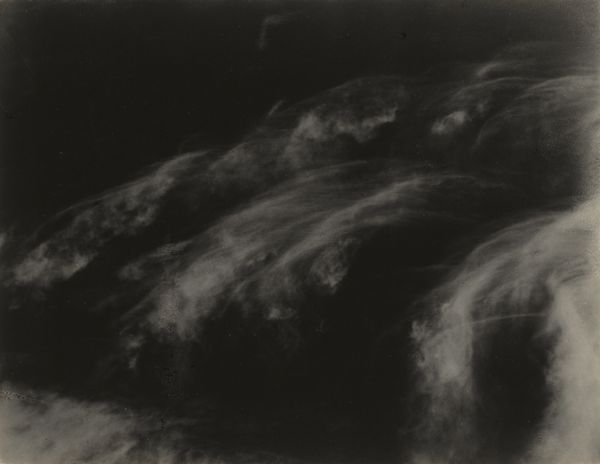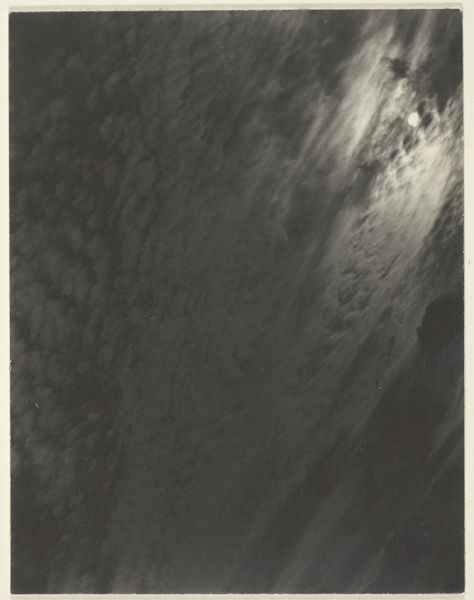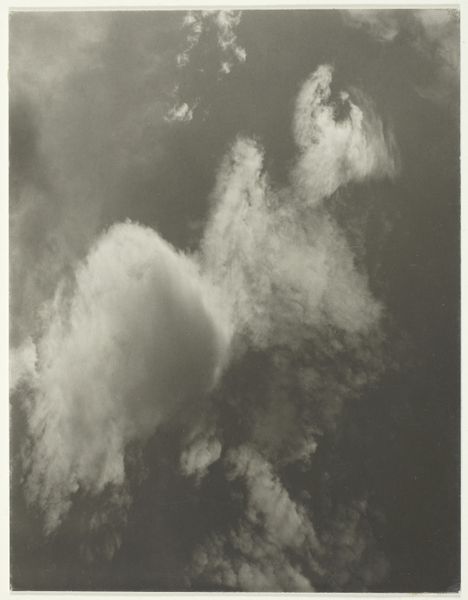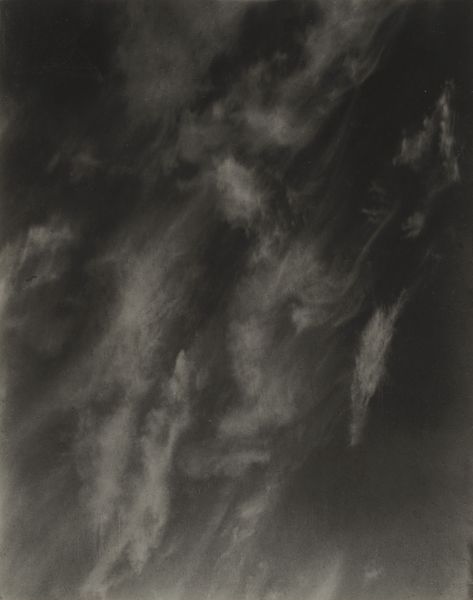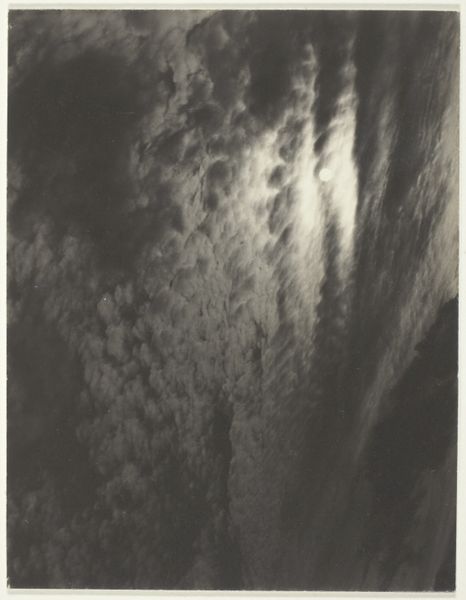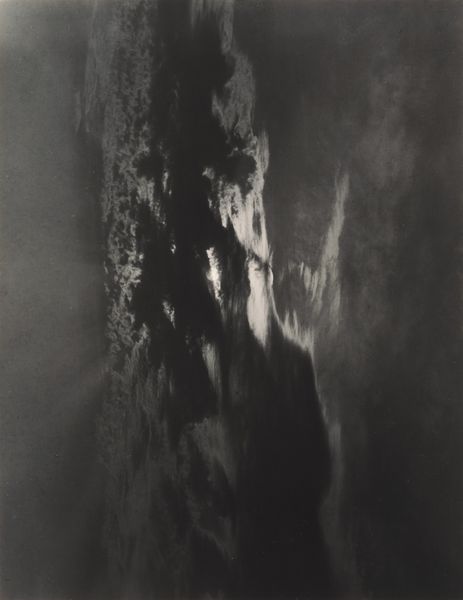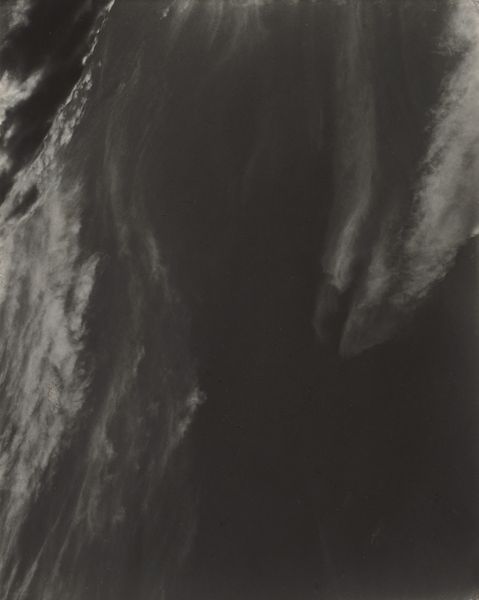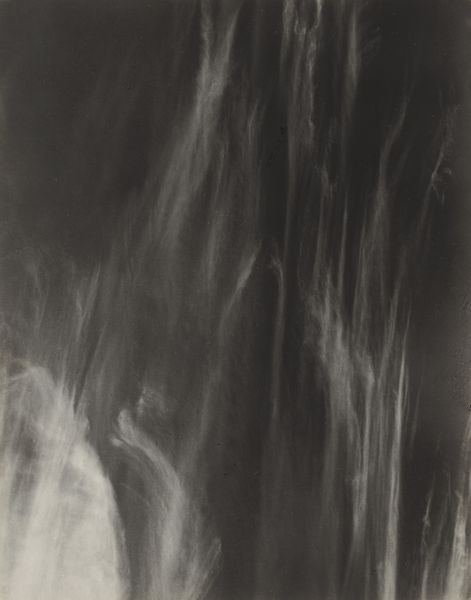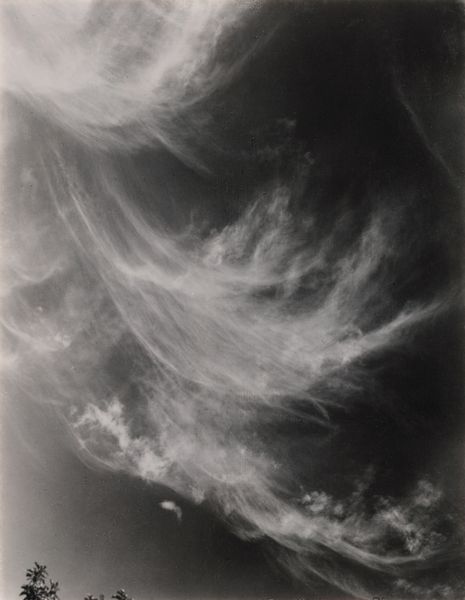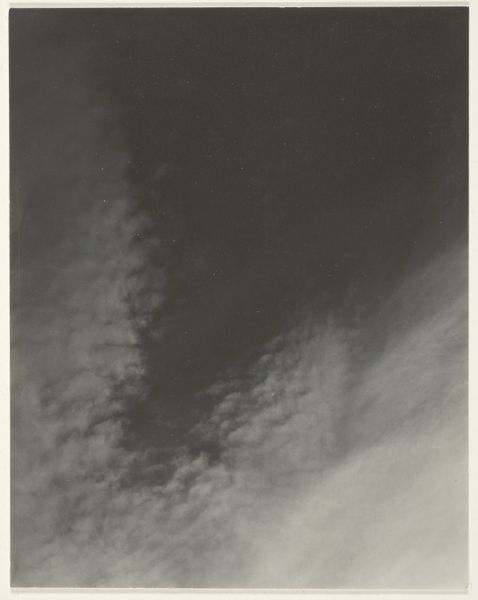
Dimensions: 11.9 × 9.2 cm (image/paper/first mount); 34.2 × 27.6 cm (second mount)
Copyright: Public Domain
Editor: Here we have Alfred Stieglitz’s photograph, "Equivalent," taken in 1925. It's a silver print on paper, and it’s all wispy clouds, creating an ethereal effect. Honestly, it reminds me a bit of smoke and makes me think of fleeting moments. What exactly are we meant to see here? Curator: Fleeting moments… precisely! It's like catching whispers of the sky, isn't it? Stieglitz, bless his restless soul, aimed to capture not just clouds, but emotions – pure feeling distilled into silver. He was obsessed with finding "equivalents" for his own turbulent inner world in the forms of nature. These aren't simply clouds; they're emotional landscapes, mirrored selves. Do you sense that mirrored quality too? Editor: I guess I can see that. Like he’s projecting? But why clouds? Couldn’t he have used, I don’t know, a portrait? Curator: Portraits capture faces, which can be deceptive! Clouds are shapeshifters. They're abstract, allowing the viewer to project their *own* feelings. Stieglitz was shedding the baggage of traditional portraiture, aiming for universal emotions, almost a visual poetry of the soul. Isn’t that fantastically ambitious, in a slightly mad way? Editor: Mad, but I'm starting to get it! He’s using something simple to express complex emotions. So the clouds aren't the subject, really. It's all about what they evoke. Curator: Bingo! Think of it like music: the notes themselves are just vibrations, but the *feeling* they create… that’s the art. And, perhaps, a bit of the artist laid bare. What do you take away from this aerial ballet of emotion? Editor: That even the most ordinary thing can be profoundly personal. It’s almost daringly simple. Curator: And sometimes, my friend, simplicity is the greatest act of courage. Thanks for sharing this perspective. I'll certainly see these photos differently from now on.
Comments
No comments
Be the first to comment and join the conversation on the ultimate creative platform.


